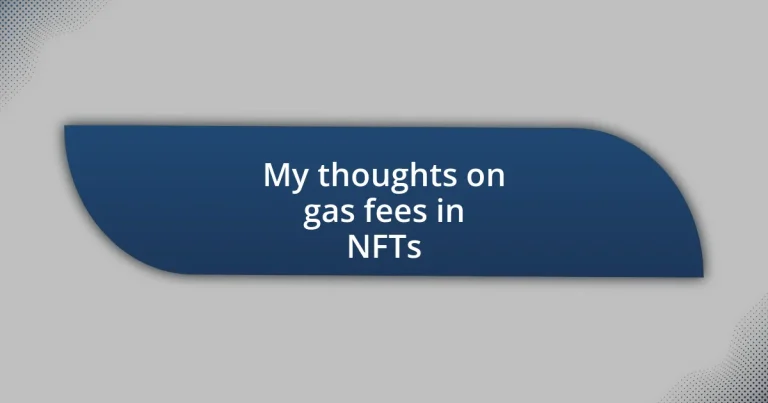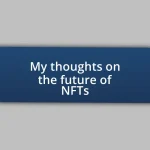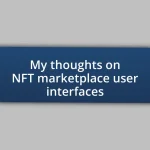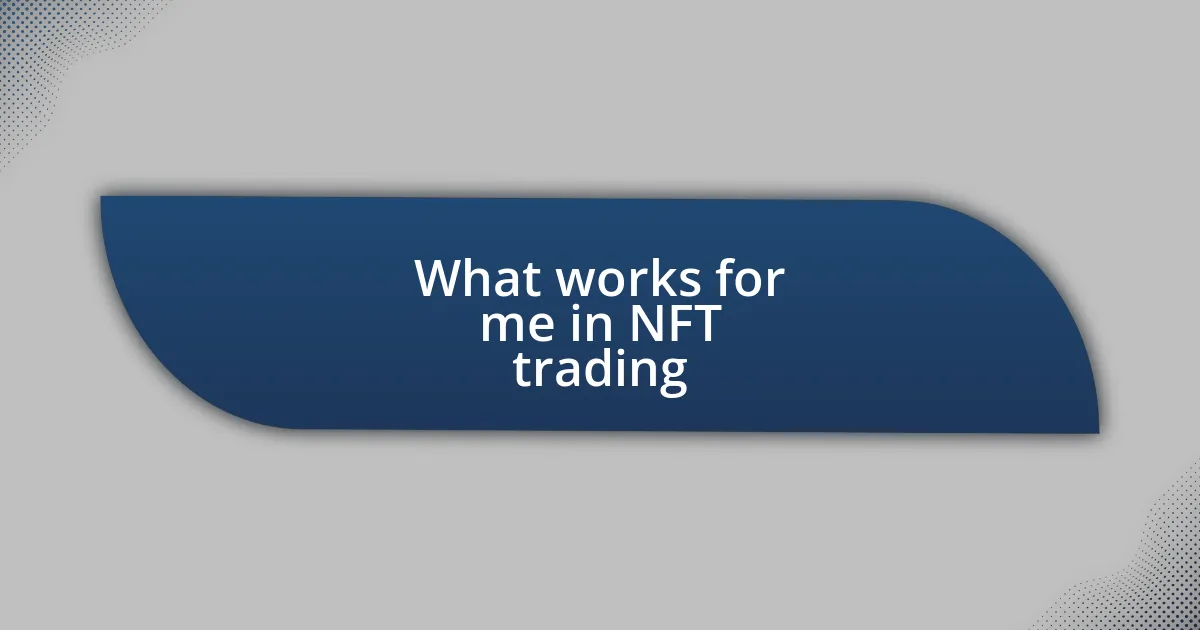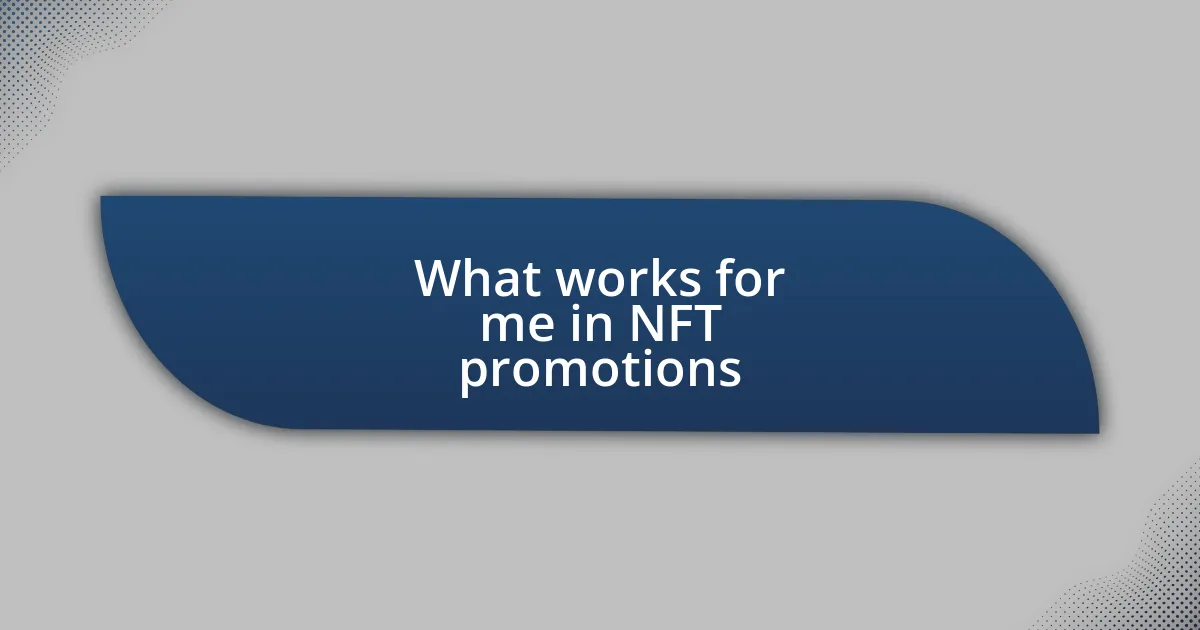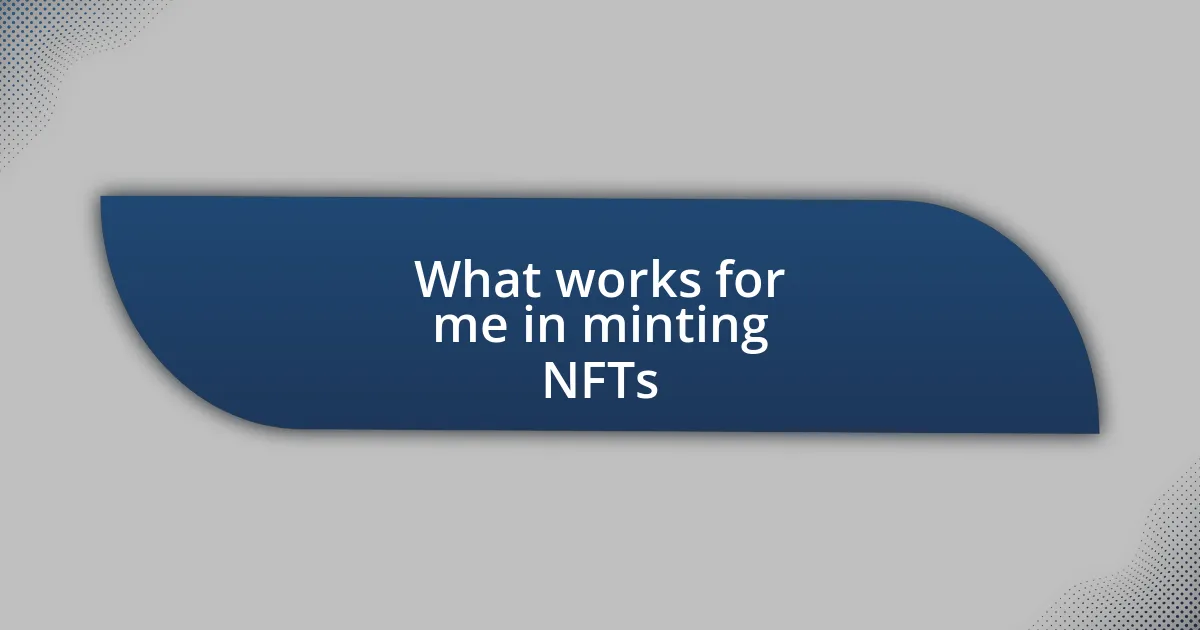Key takeaways:
- Gas fees are crucial for NFT transactions and can vary significantly based on network congestion and market demand.
- Timing transactions and utilizing layer-2 solutions can substantially reduce gas fees.
- Choosing the right blockchain, like Solana or Polygon, can lower costs and enhance the NFT experience.
- Understanding fee structures across different NFT marketplaces is essential for maximizing profits and making informed decisions.
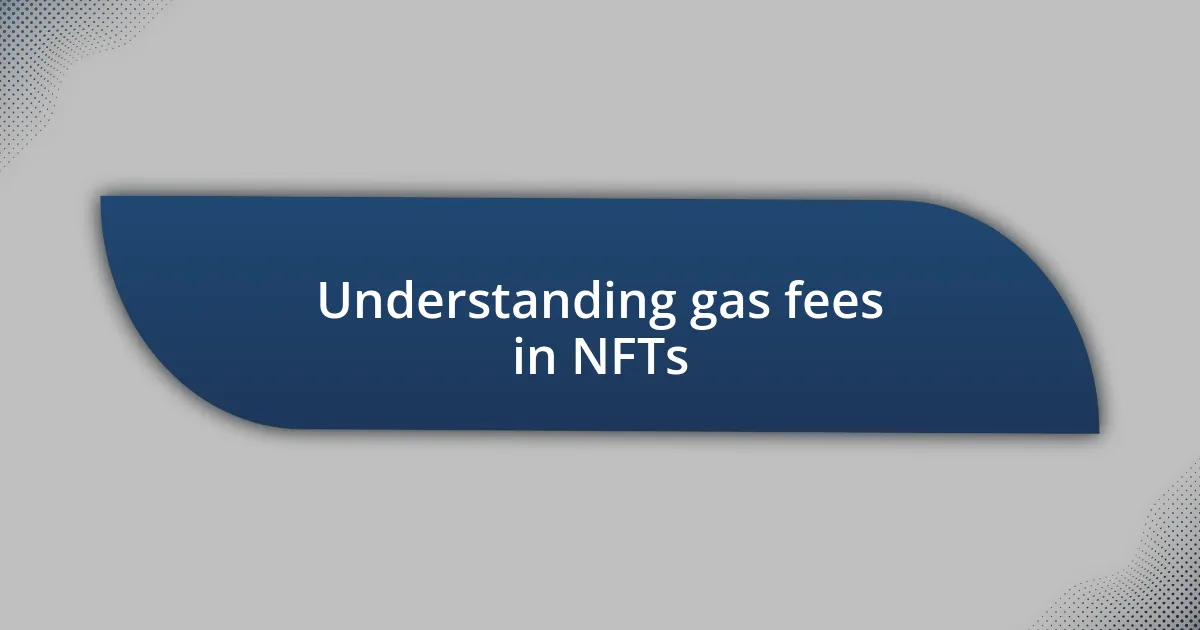
Understanding gas fees in NFTs
Gas fees in the world of NFTs can be quite perplexing. Essentially, these fees are transaction costs required to execute operations on the blockchain, which vary based on demand and network congestion. I remember the first time I tried to mint an NFT; I was excited until I saw the gas fee. It felt like an unexpected toll on creativity, making me question whether my piece was worth the price.
These fees can fluctuate dramatically, sometimes reaching the hundreds or even thousands of dollars during peak times. Have you ever wondered why this happens? It’s largely due to the Ethereum network’s structure, which is the backbone for many NFTs. When I experienced a spike in gas fees while trying to bid on an NFT, it hit me – it’s not just an insignificant transaction cost; it’s a reflection of the vibrant, albeit sometimes chaotic, marketplace we’re engaging with.
Understanding gas fees is crucial if you’re diving into NFTs. It requires not only a grasp of how they function but also an awareness of timing your transactions. I’ve learned to be strategic; I often monitor gas fee trends and jump in when the rates dip. It’s a bit like surfing the waves – you have to catch the right moment to ride smoothly without wiping out on costs.
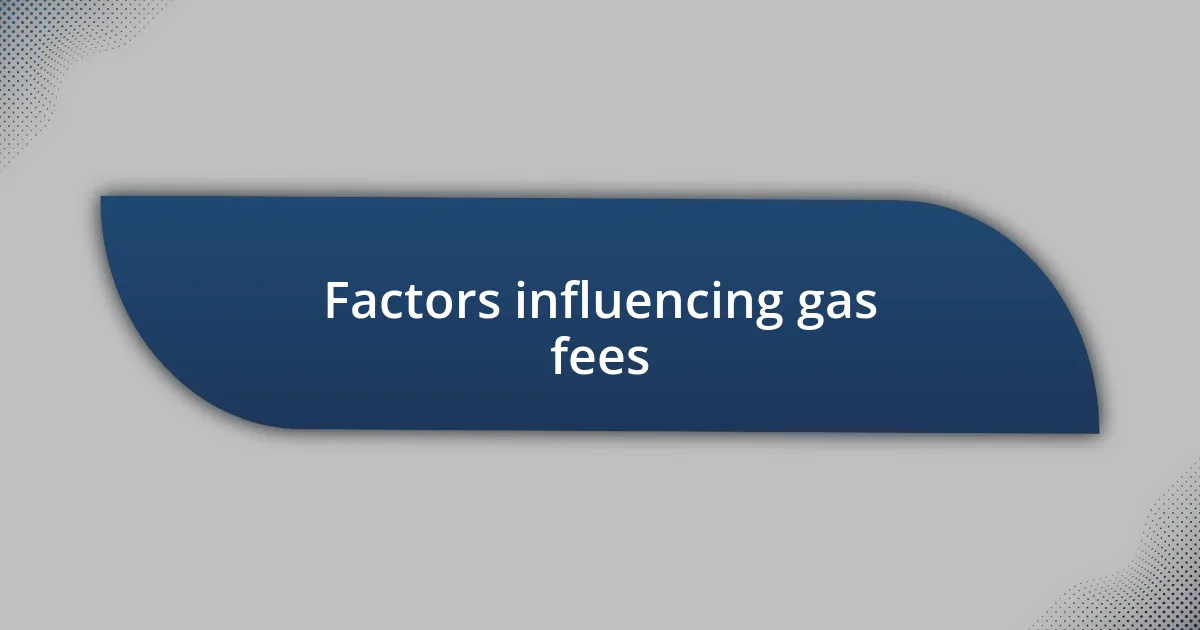
Factors influencing gas fees
Factors influencing gas fees can be quite intricate. I’ve come to realize that several elements play a significant role in determining these costs. For instance, when I tried to mint an NFT during a major launch, I was stunned by how quickly the gas fees surged. It was a vivid reminder of how market activity can impact costs, often leaving many users scrambling to find the best time to transact.
Here are some key factors to consider:
- Network congestion: A surge in users can overwhelm the Ethereum network, driving fees skyward.
- Complexity of transactions: More complex operations, like minting or executing smart contracts, can require higher fees.
- Time of day: Fees can vary depending on the time, with typically lower costs during off-peak hours.
- Demand for tokens: High interest in particular NFTs can cause spikes in transaction fees as buyers race to secure them.
- Gas price settings: Users can set their own gas price, which influences how quickly their transaction is processed; higher prices lead to quicker execution.
Navigating these factors is akin to walking a tightrope. I once missed out on a promising NFT simply because I underestimated the congestion during a popular drop. It taught me that timing and awareness are just as crucial as creativity in this space.
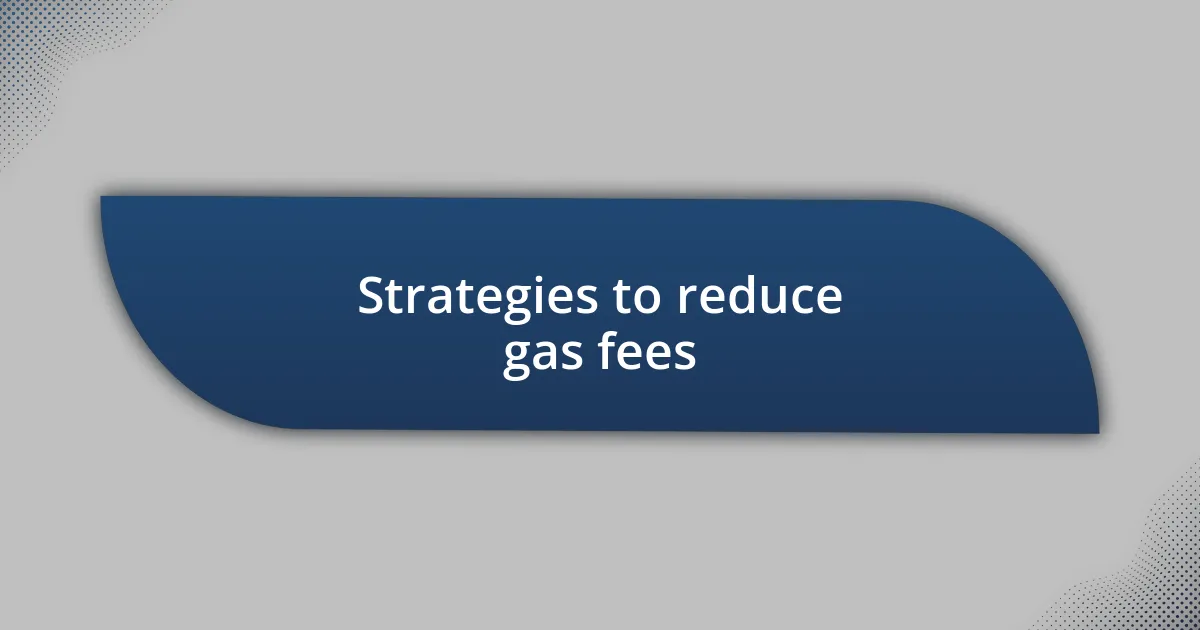
Strategies to reduce gas fees
Finding ways to reduce gas fees can be a game-changer for anyone involved in the NFT space. One effective strategy I’ve learned is to mint or trade NFTs during lower traffic times. I remember one evening when I decided to wait until late at night to make my transaction; I was pleasantly surprised to see the fees drop significantly. This experience made it clear that patience can pay off, sometimes saving you considerable amounts.
Another approach is to use layer-2 solutions. These solutions, like Polygon or Optimism, enable transactions with substantially lower fees compared to Ethereum directly. I recall moving some of my assets onto Polygon, and the difference in cost was astonishing. It felt like a little victory in my NFT journey, and I highly recommend this route for anyone looking to lift the financial burden of gas fees.
Finally, setting a custom gas price can be really helpful. I once set my gas price a bit lower during a transaction and got lucky, as others were willing to pay more to get ahead. It taught me that sometimes, a little risk in setting your own price can lead to unexpected benefits down the line.
| Strategy | Description |
|---|---|
| Timing Transactions | Mint or trade during off-peak hours to save on fees. |
| Layer-2 Solutions | Utilize platforms like Polygon for significantly reduced fees. |
| Custom Gas Pricing | Experiment with lower gas prices to find potential savings. |
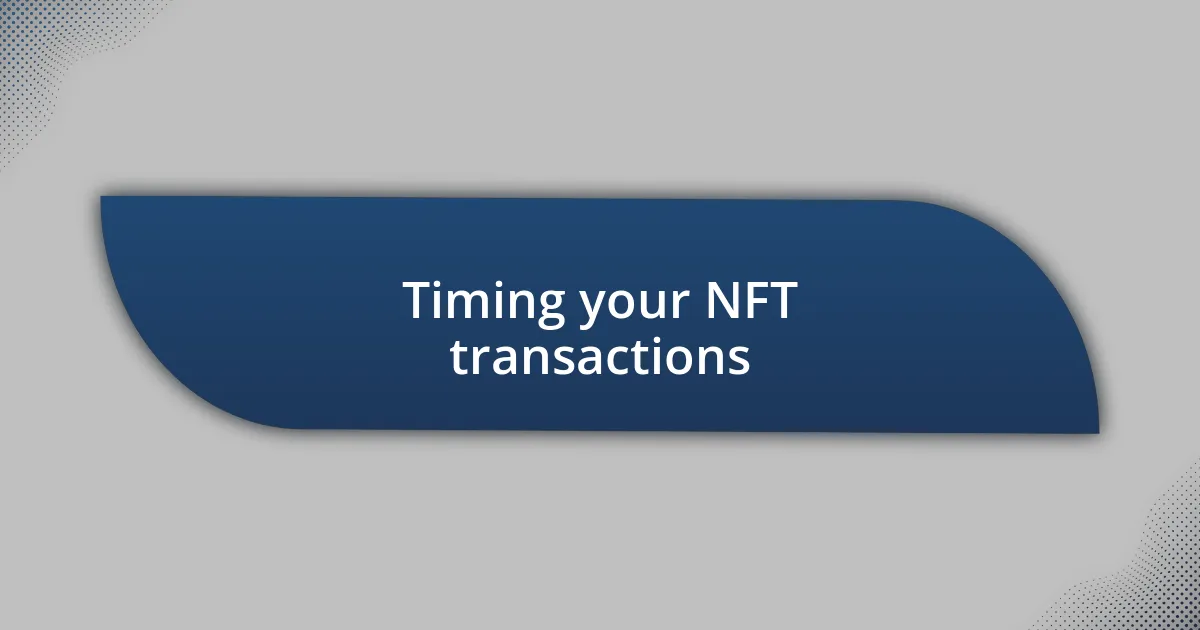
Timing your NFT transactions
Timing your NFT transactions can significantly impact the gas fees you incur. I’ve found that observing the network activity is essential. For instance, there are those joyful moments when I’ve been able to trade early in the morning or around midnight, often resulting in much lower fees. Have you ever noticed how the gas fees fluctuate during the day? It’s a striking realization that spending just a little time to pick the right moment can save you money.
I also remember an instance when I made a mental note of when the busiest periods fell during the week for NFT launches or drops. Taking that additional moment to check Twitter or community forums helped me dodge high fees entirely. Instead of jumping into transactions during peak times, waiting for a lull proved to be a wise move. The thrill of catching lower fees often makes the NFT journey feel a bit more rewarding and fulfilling.
Moreover, I’ve learned that combining timing with other strategies can be particularly effective. For example, while I waited for off-peak hours, I utilized layer-2 solutions to maximize my savings even further. This approach not only made transactions more affordable but also added a layer of excitement, knowing that I was making the best financial choices. How about you? Have you tried to align your transaction timing with other strategies for even greater benefit?
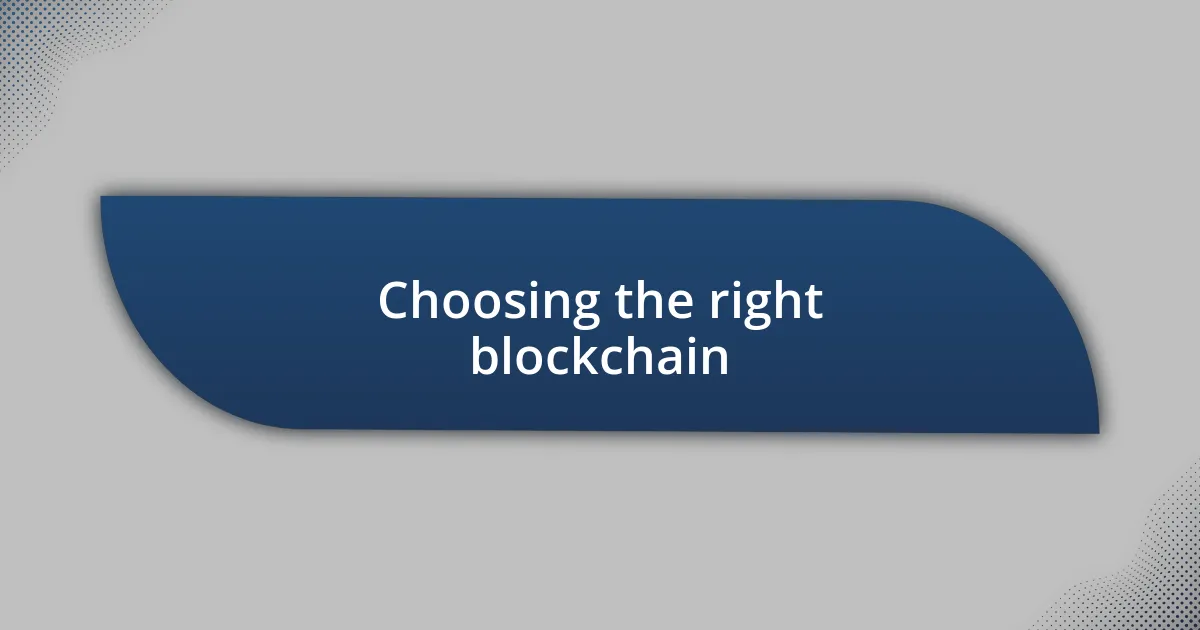
Choosing the right blockchain
When it comes to choosing the right blockchain for your NFT projects, I can’t stress enough the importance of doing your homework. Exploring different blockchain options has shown me that not all blockchains are created equal, especially when it relates to gas fees. For instance, I once leaned towards Ethereum for its popularity and robust ecosystem, but I quickly realized that other blockchains like Polygon provided a more wallet-friendly alternative without sacrificing quality. Have you considered the trade-offs between familiarity and cost?
I vividly remember one project where I was torn between using Ethereum and Solana. Initially, I opted for Ethereum because it felt safe, but as gas fees skyrocketed, I faced tough decisions that affected my budgets. Switching my focus to Solana was a game-changer. Not only were the fees significantly lower, but I was also impressed by the speed of transactions. Isn’t it interesting how the right choice can transform your entire NFT experience?
Ultimately, your decision can hinge on various factors—community engagement, transaction speed, and, of course, gas fees. Each blockchain has its unique strengths, and I’ve learned that aligning your project goals with the right platform can lead to greater success. Have you thought about how your choice of blockchain can impact not just costs but also overall user engagement? I believe these considerations are crucial for maximizing your NFT journey.
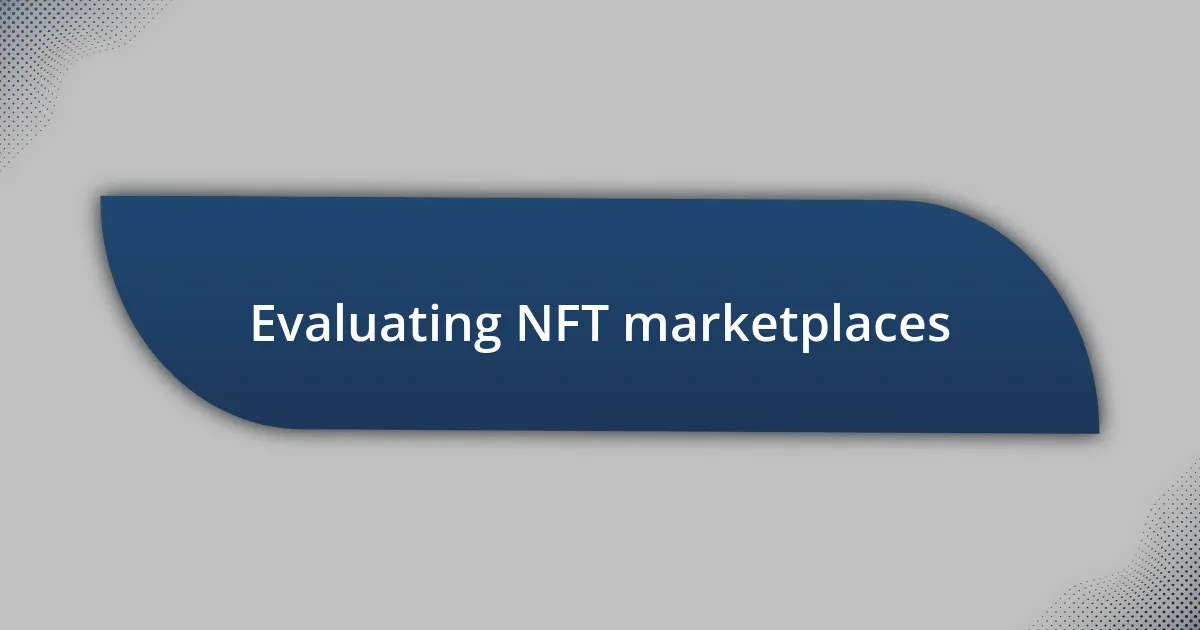
Evaluating NFT marketplaces
Evaluating NFT marketplaces is a nuanced process that goes beyond just the surface. Each platform has unique features, fees, and user experiences that can significantly impact your NFT transaction. I remember when I first explored marketplaces like OpenSea and Rarible; while OpenSea offered a wider selection, Rarible’s community-driven approach felt more engaging. Have you ever noticed how the right marketplace can make you feel more connected to your art?
In my own journey, I found myself gravitating toward smaller marketplaces that focused on niche communities. For example, on Foundation, I felt like my works received the attention they deserved, and the lower fees made it easier for collectors to support my projects. It’s remarkable how a marketplace’s character can influence one’s selling experience. What counts more for you: exposure to a broad audience or fostering meaningful connections?
As I’ve navigated these platforms, I learned that understanding the fee structures is critical. Some marketplaces charge a flat fee while others take a percentage of your sales. This distinction can drastically alter your profits. Isn’t it fascinating how a slight change in fee structure can reshape your strategy? Keeping these financial implications in mind has been invaluable for making informed decisions in my creative endeavors.
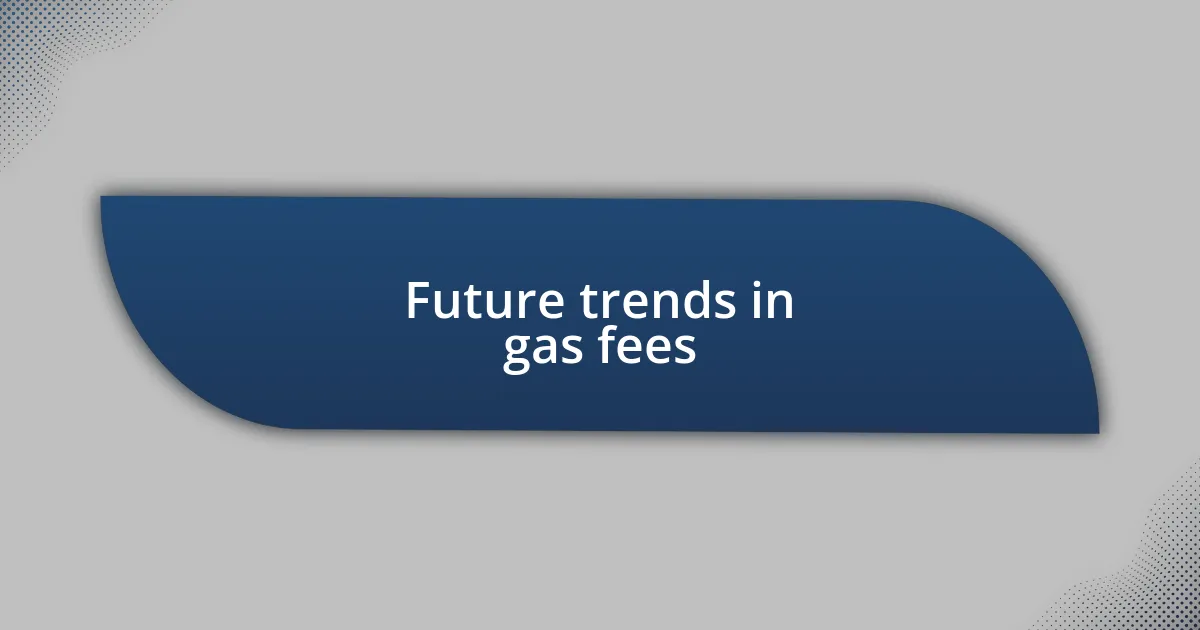
Future trends in gas fees
One emerging trend in gas fees is the rise of Layer 2 solutions, which aim to drastically reduce transaction costs. I’ve seen the positive impact firsthand while experimenting with platforms like Polygon, where my gas fees were a fraction of what they were on Ethereum. Can you imagine how game-changing it would be if everyone could access NFTs without worrying about hefty fees?
Additionally, as blockchain technology evolves, there’s potential for more efficient consensus mechanisms to emerge, which could lead to lower gas fees across the board. I often wonder how innovations like proof-of-stake, which I dabbled with, could reshape our financial landscape. If the technology behind these transactions becomes more streamlined, could we witness a surge in NFT participation from the masses?
Moreover, the ongoing debate around gas fees may spur a push for more transparent fee structures from marketplaces. I remember when I faced unexpected charges during a minting process, which left me frustrated. If marketplaces can provide clearer insights into their fee structures, it might foster trust within the community. Isn’t it intriguing to think how transparency could encourage more artists and collectors to dive into the NFT space without fear of hidden costs?

